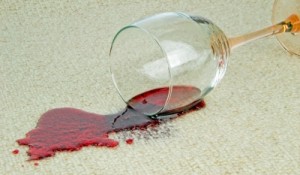 Berber Carpets
Berber Carpets
Among consumers, there is more than a little confusion about berber carpets due to considerable misinformation passed along by carpet salespeople who are more interested in making sales than providing the facts. So, let’s cover them.
The term, ‘berber,’ denotes a pile structure just like saxony, plush, velvet cut, cut and loop, looped, level loop, and sculptured. And berber, per se, is one of several styles of looped pile. But that’s all berber is—a ‘pile structure’ that may be constructed through the use of any one of five fiber types—nylon, polyester, acrylic, polypropylene (Olefin) or wool. Or, in fact, the pile style could be made of a blend of two yarns.
While I have heard favorable comments from customers about their berber carpet’s perform-ance, the reverse is usual. “I’ll never buy berber carpet again,” I frequently hear. “It packs down badly, gets dirty quickly, unravels, and looks terrible. But that sure isn’t what the carpet salesman said it would do.”
Obviously, misinformation can lead to misfor-tune. But is also possible for misfortune to be compounded by wrong conclusions. What I’m telling you is that the above misfortune has noth-ing to do with the fact that the pile style was ber-ber but rather with the yarn type used to create it.
When a customer tells me that her carpeting packed and soiled quickly, I instantly deduce that the yarn is probably polyester, acrylic, or Olefin. And if she tell me it’s a berber, I deem Olefin to be the most probable. Why?
First, all three of these yarns lack resilience and all are byproducts of petroleum, which makes them oil friendly—giving them the inclination to soil more quickly. Second, if it is berber, I re-gard Olefin to be most probable, because Olefin has the least resilience, and there has been more berbers constructed of Olefin than any other yarn.
Still, it must be said that the homeowner can as well be at fault in causing the aforementioned performance problems. It is not uncommon for people to live on their carpeting with abandon, while they make no effort to maintain it. Such being the case, poor performance is inevitable, regardless of pile structure or yarn type.
Berber, being a low-pile of looped structure, has the potential of being an excellent per-former, of being an excellent choice for high traffic areas. But whether this potential excellence will be realized is necessarily dependent upon two things:
1) Yarn type. Nylon’s overall performance excels all other yarns—including wool. (Wools can compete with nylon, but they are also FAR more expensive.) Therefore, nylon berbers greatly out perform berbers made of other yarns.
2) Proper installation. It is imperative that ‘seam sealer’ be applied on all seams. Seam sealer is an adhesive that is sup-posed to be applied along the vertical edge of the two carpets to be seamed together. Its purpose is to prevent seam raveling. However, few carpet installers apply it as they should, and that is the reason raveling problems occur.
The bottom line: If you want a great performer for high traffic areas, nylon berbers rank among the best. But you want to make sure that it’s power-stretched and seam-sealed properly.
